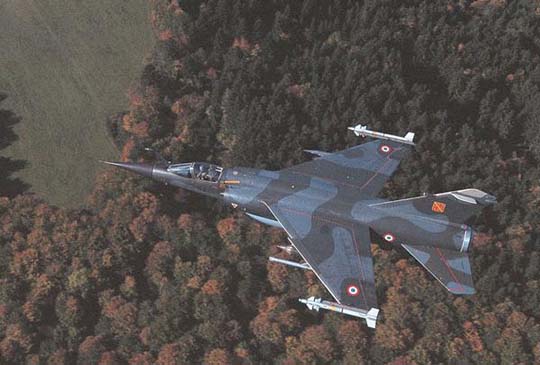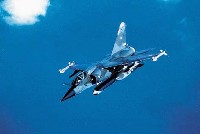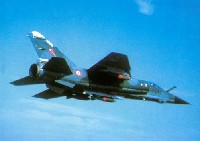Global Aircraft -- Dassault Mirage F1
|
Aviation Center
US Attack
US Bombers
US Cargo
US Fighters
US Helicopters
US Patrol/Pursuit
US Reconnaissance
US Tankers
US Trainers
US UAV's
US X Planes
Orbiter Vehicles
WWI Aircraft
WWII Aircraft
Airbus
Antonov
Boeing
Dassault
Ilyushin
Kamov
MiG
Mil
Saab
Sukhoi
Tupolev
Yakovlev
Joint/Rest of World
Entertainment Center
Members Center
New Technologies
Contact Us
Extra Navigation
GAC Engine
Dassault Mirage F1 Specifications
Dassault Mirage F1 Achievements
Dassault Mirage F1 Background
Dassault designed the Mirage F1 as the successor to its Mirage III and Mirage 5 fighters. Unlike its predecessors, it has a swept wing mounted high on the fuselage, as well as a conventional tail surface.
The first prototype, which was developed by Dassault using its own funds, made its maiden flight on 23 December 1966. The type was officially accepted by the French Air Force in May 1967, at which time three further prototypes were ordered. With the greater thrust of its afterburning SNECMA Atar 9K-50 turbojet, the F1 easily outclassed the Mirage III. Although it has a smaller wingspan than the Mirage III, the F1 nevertheless proved to be clearly superior to its predecessor. It can carry up to 40% more fuel, has a shorter take-off run, a superior range in lo-lo missions, and better maneuverability. In order to comply with the French Air Force's requirement for an all-weather interceptor, the first production Mirage F1C was equipped with a Thomson-CSF Cyrano IV monopulse radar. The later Cyrano IV-1 version added a limited look-down capability. The Mirage F1 entered French Air Force service in May 1973 when the first production version was delivered. Initially, the aircraft was only armed with two 30 mm internal cannons, but in 1976 the R530 medium-range air-to-air missile was released for use. A year later, the R550 Magic followed. About the same time, the American AIM-9 Sidewinder became part of the Mirage F1's armament, after the Hellenic Air Force requested integration of the Sidewinder on its own Mirage F1CG fighters. The 79 aircraft of the next production run were delivered during the period March 1977 to December 1983. These were of the Mirage F1C-200 version with a fixed refuelling probe, which required an extension of the fuselage by 7 cm. The Mirage F1 served as the main interceptor of the French Air Force until the Dassault Mirage 2000 entered service. | ||||||||||||||||||||||||||||||||||||||



